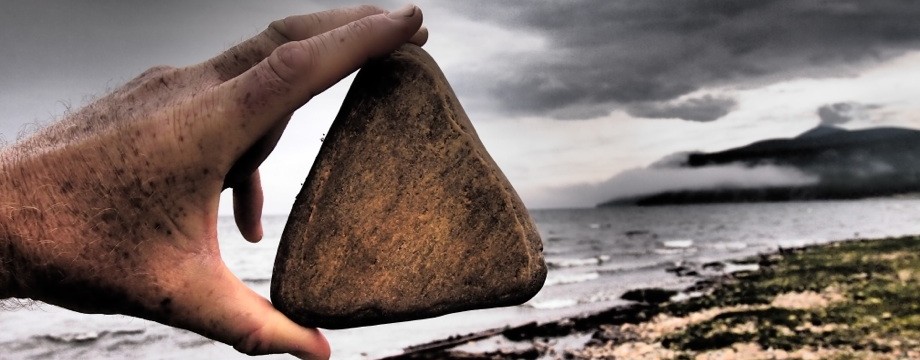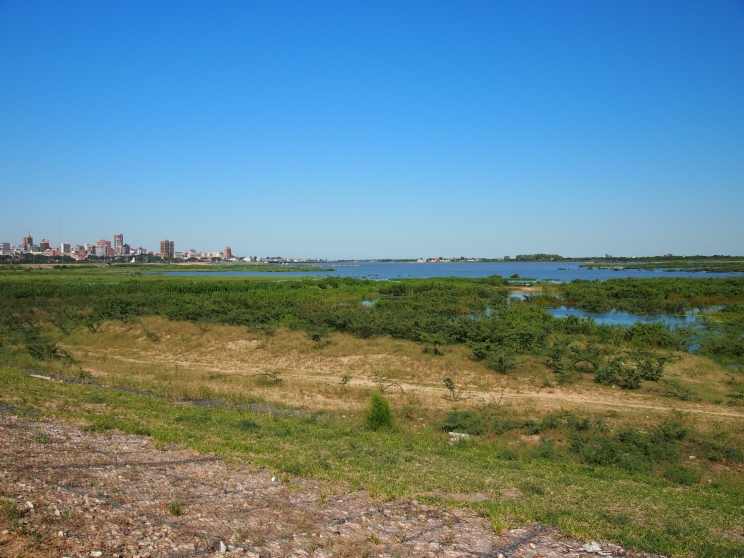Three months ago I set out to travel from Australia to Paraguay in the same way that Australia’s only diaspora did 120 years before me. I imagined that when I arrived to the place in Paraguay where they had all travelled to settle all those years ago, it would bring some closure to my journey. It has in fact created a new series of journeys that are now only beginning to widen and deepen: journeys of new friendships with the descendents of these amazing and peculiar people.
When I set out from Australia under sail, especially in my mind were William and Lillian Wood, the grandparents of my old friend Enrique (who I met by chance in Paraguay in 2002), who arrived from Australia to Cosme in May 1895. Indeed on the day I set sail (10th of October 2013) one of William and Lillian Wood’s granddaughters, Carmen Wood (who migrated to Australia around 30 years ago), was on the docks in Sydney Harbour to see me off. We shared some tereré by the tall ships I was about to set sail in and talked about what it must have been like all those years ago. As a parting gesture she had kindly brought me a packet of yerba mate for my journey. I was hoping to experience something of what her grandparents may have experienced when they left Australia to follow the socialist utopian dream to Paraguay.
Travelling by sea is a singular experience. Cut off from the life one had on land becomes a way of life in and of itself; one wants for little that was upon the land. I didn’t know what to expect to feel or be once I arrived to the continent I already know so well. And I imagine that like me they too would have had time on the high seas to think about what lay ahead. However, such is the life of a sailor that there is in fact little time to contemplate the world that awaits beyond the tumultuous blue horizon; sailing a ship and being present in the maritime moment is all consuming (see previous blog https://planetlars.me/2013/11/21/the-face-of-god/).
To get here I have sailed almost 16,000 kilometres across the South Pacific, touched the Southern Ocean’s frigid depths, rounded the famed [and foggy] Cape Horn, explored the Falkland Islands / Las Malvinas and arrived into that grandest of river mouths, the River Plate. From there I have travelled more than 3,500 kilometres by land through Uruguay and Argentina to arrive at the original place where those Australian pioneers first settled from in 1893.
This Paraguayan school (25° 28′ 32.43″ South, 56° 32′ 49.57″ West), which is nearby to the original colony, is actually named after the District that got its name from the colony that became known as Nueva Australia (New Australia).
On Sunday 12th of January I’d spent the day with bright-eyed Rodrigo Wood and his energetic wife Carmen de Wood (not to be confused with Rodrigo’s cousin Carmen in Australia), the greatest and kindest of hosts, meeting their Wood relations in the old colony of Cosme. It was after the split up of the first colony, Nueva Australia, in 1894 that Cosme became the second Australian colony, when a group of believers continued the socialist principals following their failing leader William Lane to new lands they’d acquired to the south.
After following this little known chapter in Australia’s history for so long it was wonderful to finally see and smell the places that Australia’s only diaspora first called home.
On the way to Cosme Rodrigo was telling me stories.
“My father Norman was born here in Cosme”, recalled Rodrigo, “And when he returned from Europe after World War I [like his older brothers he’d wanted to enlist with Australian Army but there being no Australian Embassy in South America at the time he’d enlisted with the British Royal Army instead and had gone to England to serve] he had to strip naked and swim across this swollen river to get back to his parents’ home in Cosme. On emerging on the other side he was suddenly attacked by swarms of mosquitoes and had to run back into the water for protection!”
We crossed the new bridge over this river, the Pirapó, sitting deep within its shaded banks and across the flood plains to the low rise upon which was nestled the enduring community of Cosme, languid in its quiet Sunday afternoon of dust and heat. We ate typical Paraguayan lunch of patio-raised chicken casserole and fresh corn meal bake in the house of Rodrigo’s old cousin Patricio Wood (who spent 25 years in Australia but has returned to live here with his new young family). He greeted me with a nasal ‘Gday mate, come have some tucker with us’.
After a quick visit to the graves of Rodrigo’s grandparents we strolled past turkeys, chickens and pigs to enter the shaded yard of the big old stilted Queenslander-style house of Francisco Wood, who never left Cosme like some of his brothers did. We savoured a tereré (with ice cold water mixed in this case with lemon grass and cat’s claw) with fighting-fit cousin Frisky and his new young family (some of his now adult children from his first marriage had emigrated to Australia) under the shade of the big house which looked kind of in its place in this world, despite being thousands of miles from Queensland. It was built upon the ruins of the house that his grandfather Little Billy Wood had built in 1896 and in which his father Wallace and all his uncle and aunts, including his uncle Norman, were born. The fireplace of the original house endures in the cool underneath section of the new house. And upstairs Frisky’s 18-year-old daughter showed me the original tea chests that her great-grandparents used to emigrate from Australia to Paraguay; they were truly a family heirloom.
The Australian-Paraguayan history is alive and well. And the Australian connection is strongly felt by the many descendants in Paraguay.
“Lots of people come to see us, to make their films and to write their books”, claims an adamant Frisky.”It’s alright for them. But what about the case for some help from the Australian Government!?”
This sentiment is reinforced by Rodrigo, who is President of the Australia-Paraguay Chamber of Commerce in Asuncion*:
“Paraguay opened its doors when times were tough for those Australians, our grandparents. Now times are tough in Paraguay and our children would benefit from re-connecting with the land of their forebears. The case for a preferential scholarship – be it for cultural exchange or higher education – for descendants of Australia’s Paraguayan diaspora is a strong one. The historical cultural ties are enduring between the two countries and much is to be gained from strengthening them.”
I tend to agree with Rodrigo and Francisco. Enough has been written and filmed about them over the years from Gavin Souter’s seminal 1968 historical account (‘A Peculiar People’), the ABC documentary of 1974 and Network Ten’s documentary for the bicentenary in 1988, through to Anne Whitehead’s renewed account of the diaspora circa 1997 (‘Paradise Mislaid’) and to Ben Stubbs’ ‘Ticket to Paradise’; a more dismissive account of the descendants published in 2010.
Will the Australian Government listen to the diaspora’s calls?
If they do I predict that new stories of a new Australia and a new Paraguay will emerge to enrich our lives even further.
* http://en.wikipedia.org/wiki/Australian_Chamber_of_Commerce_in_Paraguay

A modern Paraguayan school named after the District ‘Nueva Australia’, which got its name from the original ‘New Australia’ colony.






